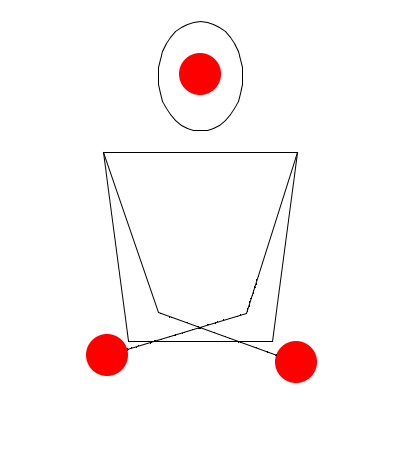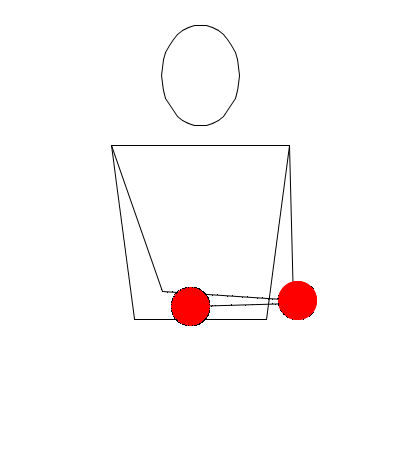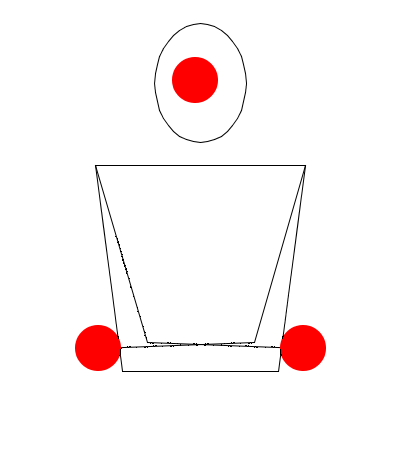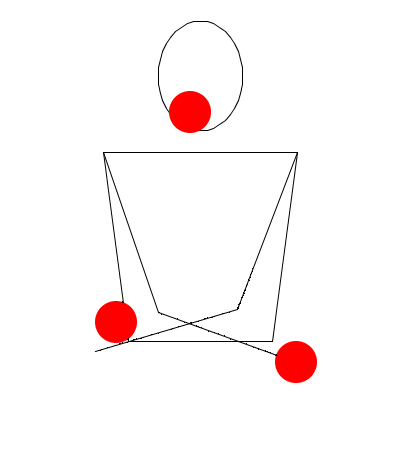Chop Shower
Other Tutorials:
- Siteswap: 3
- Difficulty (1-10): 6
- Prerequisites: Windmill, Crossed-Arm Reverse Cascade
- Related Tricks: Chops, Frantic Cascade, Statue of Liberty

The Chop Shower is a Windmill variation that incorporates a fast chopping arm motion, in an opposing direction to the ball flight paths.
Once the Windmill pattern has been mastered, an obvious and popular mutation is to switch which arm crosses over the other when reaching
across your body to catch. While more difficult than the standard Windmill, this variation can often appear awkward and usually has less visual
appeal. By simply supplementing this variation an additional chop element, the Chop Shower establishes a more mechanically
stable and balanced pattern while also improving the overall appearance.
To learn the Chop Shower, start with the base Windmill pattern. Notice that each arm plays a different role; one arm can be described as the
top arm and the other serves as the bottom arm. While maintaining the same ball paths, switch the arm roles. As noted above, this will likely
feel quite awkward. The next step is to note where the top arm is catching the ball, and raise that point so that your forearm is vertically
oriented when the catch is made. This higher catch reduces the in-flight time, allowing time for a chop to be made prior to the next throw
by that hand. For the chop, try to keep your elbow close to your body and as stationary as possible, so that your forearm rotates like the
hand of a clock. Drill a single strong and rapid chop until you have locked this movement into muscle memory.

After you are comfortable with chopping as depicted above, attempt to mix a chop into the Windmill, swiping the chopped ball between the other
two. Then progress to chopping the same ball every time, then every other catch, then two consecutive chops. After completing each of these steps,
you soon should be able to run the pattern without much further difficulty.
For optimal clarity, try not to carry the chopped ball in front of or behind a thrown ball. If you are having trouble carrying the chopped ball
between the other two balls, you can experiment with either chopping over both of the other two balls, or underneath them, as shown below. Depending
upon the length of your arms and chopping speed, one of these variations may seem more natural. Both of them maintain the fundamental identity of
the pattern and are worth the investment to attempt.
 |
 |
As a standalone and simple repeating pattern, the Chop Shower has legitimate merit. However, it is perhaps better-utilized as a mechanical concept to enhance other patterns containing crossed-arm movements. The quarter-circle carry of the chopped ball supplies a nice contrast to the parabolic thrown ball arches. For example, it can easily be mixed with the Shower, Mills Mess, and/or the Crossed-Arm Reverse Cascade to construct interesting new patterns. Plenty of symmetric pattern possibilities should be apparent after learning it in both directions.
Tutorial created and submitted by Andrew Olson.
